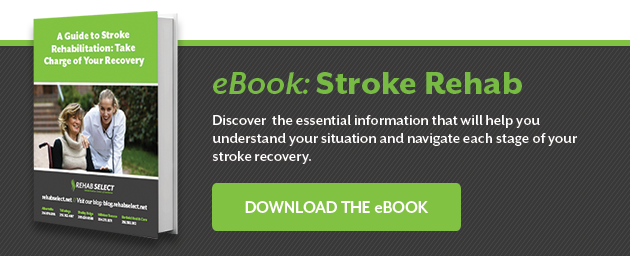Stroke occurs when a vessel that supplies blood to the brain ruptures or becomes blocked, starving brain cells of oxygen and resulting in brain damage. It is the fifth leading cause of death in the U.S., affecting 795,000 people and killing about 140,000 each year.
The good news is that stroke is preventable, and understanding your personal risk factors will help you make the appropriate lifestyle choices to lower your risk.
Two Types of Stroke Risk Factors
There are two risk factor categories: modifiable and nonmodifiable risk factors for stroke. Most prevention strategies focus on mitigating modifiable ones. Let’s explore what they are and how you may lower your risk.
What Are Nonmodifiable Risk Factors for Stroke?
These uncontrollable risk factors are causes we can’t change or control. They include age, gender, family history, race and ethnicity, prior stroke or transient ischemic attack (TIA), and genetics.
For example, the risk of stroke increases with age, particularly after 55. While males are more likely to have a stroke, females have a higher risk of dying from one. African Americans, Hispanics, and Asians have an above-average risk for stroke. Genetic conditions like sickle cell disease may also increase stroke risk.
Having these nonmodifiable risk factors does not mean that a stroke is inevitable. However, you should be more aware of your modifiable risk factors for stroke and follow stroke prevention measures.
What Are the Modifiable Risk Factors for Stroke?
Changing or managing these controllable risk factors is the key to stroke prevention since you can improve or correct them with treatment. Here are the most common modifiable risk factors for stroke:
-
High blood pressure (hypertension) may damage blood vessels and is the greatest risk factor for stroke.
-
Smoking may damage blood vessels and increase clot formation.
-
Diabetes may increase the likelihood of high blood pressure and atherosclerosis.
-
High cholesterol may cause artery-clogging plaque buildup.
-
Physical inactivity may lead to high blood pressure, poor heart health, weight issues, and increased diabetes risk.
-
Overweight may increase blood pressure, cholesterol level, and diabetes risk.
-
Poor diet may cause high cholesterol and high blood pressure.
-
Excessive alcohol consumption may cause high blood pressure.
-
Heart disease (atrial fibrillation) may cause clots to form in the heart.
-
Arteriosclerosis narrows arteries, increasing the risk of blockages.
-
Chronic stress may cause high blood pressure and other stroke-related conditions.
How to Mitigate the Greatest Risk Factors for Stroke
The greatest risk factors for stroke are controllable. Here’s how to mitigate health challenges like high blood pressure, diabetes, arteriosclerosis, weight problems, and heart disease, which may increase your risk:
Manage Hypertension
Lower salt intake and eat a heart-healthy diet rich in fruits, vegetables, and whole grains. Take prescribed antihypertensive drugs and regularly monitor your blood pressure to keep it under 120/80 mm Hg. Also, get evaluated for sleep apnea, which may contribute to high blood pressure.
Treat Diabetes
Eat a diet low on sugar and refined carbohydrates to control diabetes. Regularly monitor and manage blood glucose levels with medications or insulin as needed. Also, incorporate regular physical activity into your routine to improve insulin sensitivity and manage weight.
Quit Smoking
Get support through nicotine replacement therapies, medications, or counseling to stop smoking. Also, lower your exposure to secondhand smoke.
Lower Cholesterol
Reduce your intake of saturated and trans fats while adding fiber and omega-3-rich foods to your diet. Monitor your cholesterol level and keep it in a healthy range (LDL less than 100 mg/dL). If your numbers are high, discuss with your doctor about taking cholesterol-lowering medications like statins.
Control Weight
Reduce your body weight with a diet and exercise program. For example, control food portions and focus on nutrient-dense, low-calorie foods.
Address Heart Conditions
Schedule regular checkups with a healthcare provider to assess your heart health. Manage your condition with prescribed medications or surgical interventions if needed. If you have atrial fibrillation, you may need to take anticoagulants.
Manage Stress
Practice relaxation techniques like meditation, yoga, or deep breathing exercises. Adopt healthy coping mechanisms to avoid destructive behaviors like smoking, drinking, and overeating to respond to stress.
Managing Your Stroke Risk in Alabama
Identifying modifiable risk factors for stroke and implementing the appropriate mitigation strategies can be overwhelming. If you’re unsure where to start, ask your doctor for a referral to a nutritionist or health coach for professional help and advice.
Rehab Select’s five state-of-the-art facilities across Alabama are here to help. Managing your risk factors is particularly important if you have had a stroke. Our stroke rehabilitation services can help you improve your physical and cognitive function while lowering the risks of having another one. Learn more and schedule a tour.






